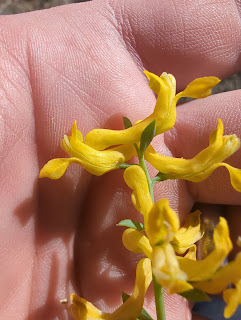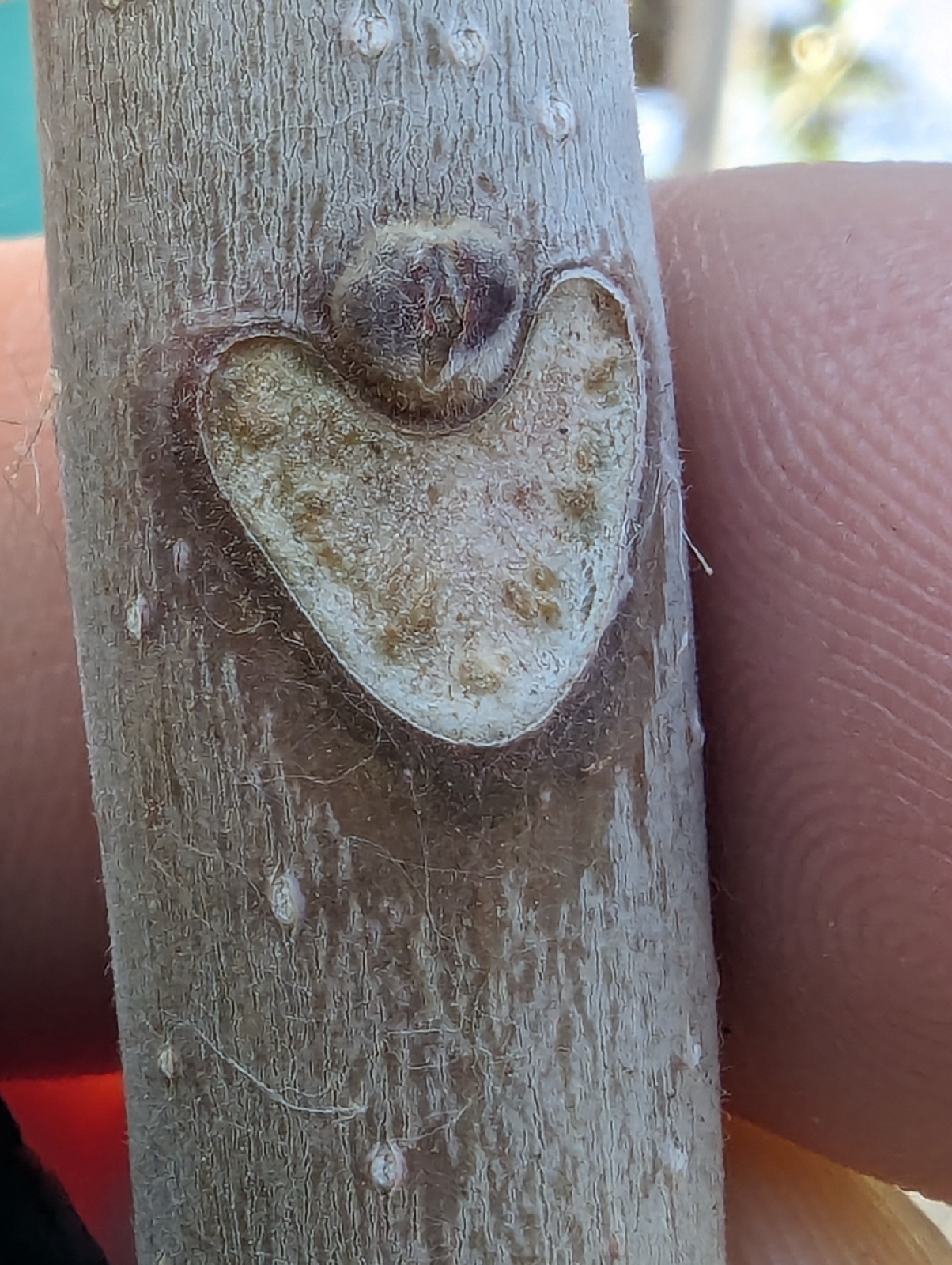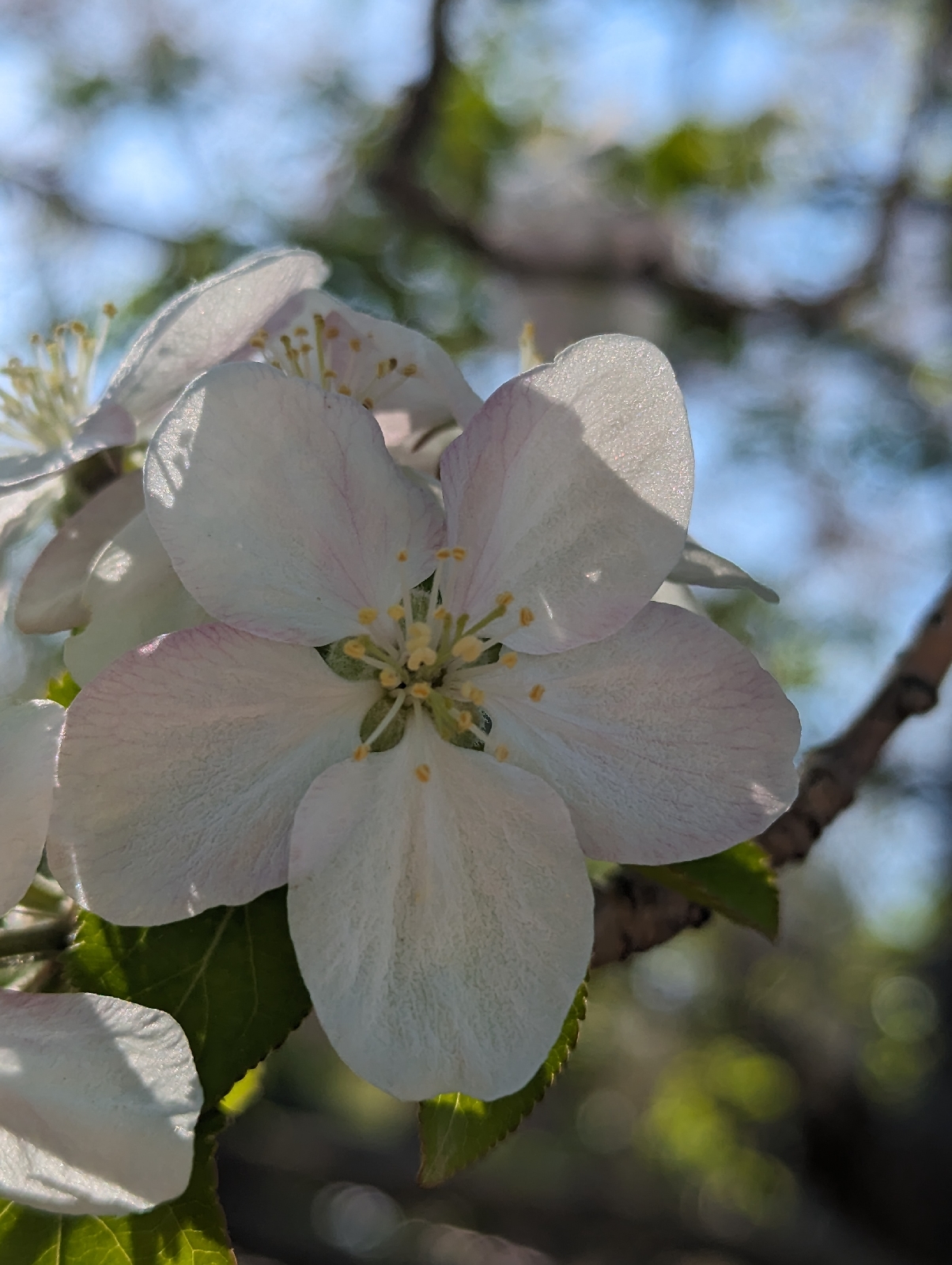“There are many paths leading to the top of Mount Fuji, but there is only one summit”
Morihei Ueshiba
In the foothills of the East mountains, the plant life is vibrant, not because of the abundance of water, but because of the scarcity of time before the summer reduces growth. Flowers advertise their wares in vibrant colors and offer sugary snacks to an abundance of hover flies and other insects. These plants are in a hurry to get the next generation ready. Even though this cactus is not an annual, the spring blooming season is very short.
Corydalis aurea is a winter annual in the poppy family. Annuals are common around human environments and where heavy grazing occurs. Many are considered weeds because of their survivability. They have short roots and survive most of the year as seeds in the soil.
Oenothera deltoides aka Dune Evening Primrose. These blooms are supposed to open at night and are usually white to attract the varieties of moths that pollinate them.
The level of the river has risen rapidly as the snow melts rapidly from the distant peaks and drains into the valley. Many people are going to again try their luck in the churning, muddy water on various one dollar gaily colored inflation devices better suited to a calm beach. Theme parks have lifeguards for a reason, because the river is treacherous. A church might keep an unprotected areas such as this off limits, but the bosque doesn't have any walls. Education is probably the best way to protect everyone.
As the level of the river rises, the excess water seeps into the surrounding soils, both laterally and up from below. This is noticeable on the deep trails through the bosque, because they tend to be more deeply incised into the soil by the scraping of many human, dog and horse feet.
Shallow pools of standing water are very different than flowing turbid rivers. They allow many forms of creatures to thrive, not all of them appreciated. Mosquitos are blood suckers, but both species also will usually only suck plant sap and are also pollinators.
Shallow pools are beneficial to many other important animals that are not often seen unless by those who take the time to stop and listen. Snapping turtles are found in many muddy areas and very shy. Those smaller than your hand are completely harmless, but they can grow to amazing sizes if they are allowed to live long enough by the people they share their spaces with.
Red eared sliders are more vegetarian and a lot more active than snapping turtles. They are far less afraid of people and use the heat of the sun during bouts of sunbathing to digest meals of algae and invertebrates.
Beavers in the Southwest are exclusively nocturnal due to hunting pressures sustained over the last 200 years. These rodents have profound effects on the health of a forest over the long term. The Russian olive trees near to a beaver dam are usually left alone. Sometimes, like in this picture, they will chose to remove one growing over the water when they need dam building material.
The narrow leaf willow forms part of the under story species space, that along with the coyote willow and willow baccharis form dense swales that shade the seedlings the mature cottonwoods depend upon to flourish. The succession process is complex and important, with seedlings growing on open sand bars until the willows catch up and surround them, which gives time for the long taproot to grow which allows the tree to flourish in the next five years it needs before it can form a canopy on it's own. This plant has been designated as a "garden of merit' recipient...in England.
Dogsbane is becoming more prevalent in area of open forest floor that used to be flooded, so the south end of Corrales bosque. This is a useful fiber plant that is widely dispersed by the wind. This plant seems to be related to milkweeds and has its own specialist beetle that can sequester its poisonous compounds much like the monarch butterfly does with milkweed.
Horsetail ferns are not actually a plant, as such. They are the sole surviving species from an era 300 million years ago where they grew over 100 feet tall. They release spores, but are not ferns. Their gametophytes can be both male or female because they are not specialized like in phanerogams. When conditions are right, structures called strobilus release spores that have hyprophilic elaters. These are very simple "legs" that react to humidity and surface tension to be motile (they can "fly" and "walk" when conditions are right. Their extensive underground roots and deep starchy tubers mean they are never removed from an area once established.
The king of the bosque is the cottonwoods, a species of poplar tree. The do not have as long a growing season as other invasive tree species. Even though they are well adapted to conditions along the river they are just not aggressive enough in their growth, and the conditions along the river has been changing over the last fifty years due to climate change. That's within a single generation for most of the oldest trees.
wind dispersal is used by many plants, however, they often use fibers instead of actual wings because the high surface area allows these balls of fluff to tumble along the surface of the forest until they are trapped by moist surfaces which increases chances for successful germination. Cottonwoods can germinate from wind blown twigs embedded in mud, from root suckers, or by dispersed seeds
While the maple samara seems more advanced, it is actually a clumsier design, only designed to disperse and slow it's descent in moderate wind. The design also lays flat after it lands, the cellulose skin allows it to float on water. The maple seed is relatively large, with good stores of energy for the seed inside.
Elms seeds are profligate and send their seeds everywhere. Trees synchronize their seed release as environmental conditions such as shortening days trigger changes in the relative amounts of plant hormones the cells of the tree is exposed to. Things are never quite that simple, of course, but the elms burst their seeds everywhere and the cottonwoods follow at a more leisurely pace afterwards. Here you can see how all the seeds have been caught in a spider's web.
There is a lot of different reasons why spiders build more webs in the spring. Part of this answer is that spiders use their webs for a darn sight more than just for catching dinner. They spin tents to protect themselves from predator wasps, they advertise their houses to wandering mates, they sense their surroundings from the vibrations of these webs, they can use thin strands to fly and disperse to new locations. These flat webs are likely from a grass spider species, these spiders are among the fastest runners in the insect world, pretty large and scary, but totally harmless to humans. This is a common problem in the insect world, where everything looks alike and a few species, out of millions, are dangerous.
In Corrales we don't have the large rhinoceros or stag beetles, but the desert stink beetles get pretty large. They grow in the leaf litter of the forest before heading into the sandy uplands to feed on plant detritus as they try to avoid the hot sun and various predators.
Beetles are one of the several very successful insect species on the planet. This is a weevil, from the long apparent snout with antennae. The official name for this long appendage is a "rostrum". The genus is some sort of Orchestes.
Beetles cover a great many niches. While the weevils are a group of herbivores that use their rostrums to bore through the tough covering of nuts and grains, this convergent lady beetle feeds on soft bodied aphids and is incredibly common, being released by rose gardeners in large numbers, as well as being found in the wild. Just about everyone knows what a ladybug looks like, but for other species, especially wasps or spiders, the distinction is not so clear.
In Corrales we don't have the large rhinoceros or stag beetles, but the desert stink beetles get pretty large. They grow in the leaf litter of the forest before heading into the sandy uplands to feed on plant detritus as they try to avoid the hot sun and various predators.
Beetles are one of the several very successful insect species on the planet. This is a weevil, from the long apparent snout with antennae. The official name for this long appendage is a "rostrum". The genus is some sort of Orchestes.
Beetles cover a great many niches. While the weevils are a group of herbivores that use their rostrums to bore through the tough covering of nuts and grains, this convergent lady beetle feeds on soft bodied aphids and is incredibly common, being released by rose gardeners in large numbers, as well as being found in the wild. Just about everyone knows what a ladybug looks like, but for other species, especially wasps or spiders, the distinction is not so clear.
Ironically, most wasps are parasitoids, their young feeding on the living bodies of spiders and caterpillars. They often fly very little, hugging the ground as they search for the emergence holes of females, or the lairs of grass spiders. Without the bright yellow stripes and propensity for sugary sodas, these drab wasps are barely noticed at all.
Ants and wasps last shared a vespoid ancestor about 100 million years ago. Given that all cells come from pre-existing cells, it shouldn't be a huge surprise to find out the last common ancestor between humans and ants was around 600 million years ago. This queen ant is shedding her wings and looking to make a burrow to lay the eggs of your long distant nieces.
Being mistaken for something else is quite annoying unless it is intentional. This Lappet moth is completely camouflaged when it is lying near to fallen leaves. In an urban environment, however, it is very conspicuous. Still very pretty, notice the thatch of long hair behind the head that helps heat conservation, and also muffles bat echolocation signals.
The sphinx moths are huge insects. The larva are called hornworms, but also called piyatem by those who still eat them. Studies show the caterpillars have a similar nutrition profile to a hamburger. The loud thrumming and erratic diving flights of the adults often cause many people to think they have seen the first hummingbird of the season.The hummingbirds have certainly arrived, of course. Their rapid fire twittering are aimed at anything and everything as their territorial drive impels them to harass everything, up to and including their own shadow. They have one of the smallest DNA genomes of any vertebrate and are often trilling in short arcs are they court a hidden female. While they are obnoxious, they are mild compared to the rufous hummingbird that will come later.
Summer tanagers are bright orange all over, but they can be remarkably well hidden when they sit in a tree's shadow. They have a loud song, but only occasionally seem to appear in the trees near my house, before moving on. They are very unique and distinctive if you can spot their flash of color.
Damselflies, dragonflies and ant-lions all have started flying around. The common blue damselfly eats the many gnats and mosquitos that are currently around the pools of water. their larvae, unlike the dragonflies, have actual gills, which can be drawback in the oxygen poor waters of many marshy pools but allows them to stay still for long periods of time under water.The genus of willows covers a lot of plants. We have coyote willow, gooding's willow, and this, the narrowleaf willow. We have also named many plants a willow that are not. There is the desert willow (a catalpa species), and the willow baccharis (an aster).
There are those who try to see the trees in the woods, or those who can't see the woods for the trees. Some like reality to be defined, and others who like to contemplate mysteries. I would postulate that if you prefer theme parks to churches, you will only enjoy nature by shrieking when you see a wasp. But if you like the mysteries of old churches it is a fact you will have a deeper, more personal experience of life than those wearing mickey mouse hats and calling everything with long leaves a willow. this is because although anyone can make the same summit of Mount Fuji, the journey is different for everyone.



















































